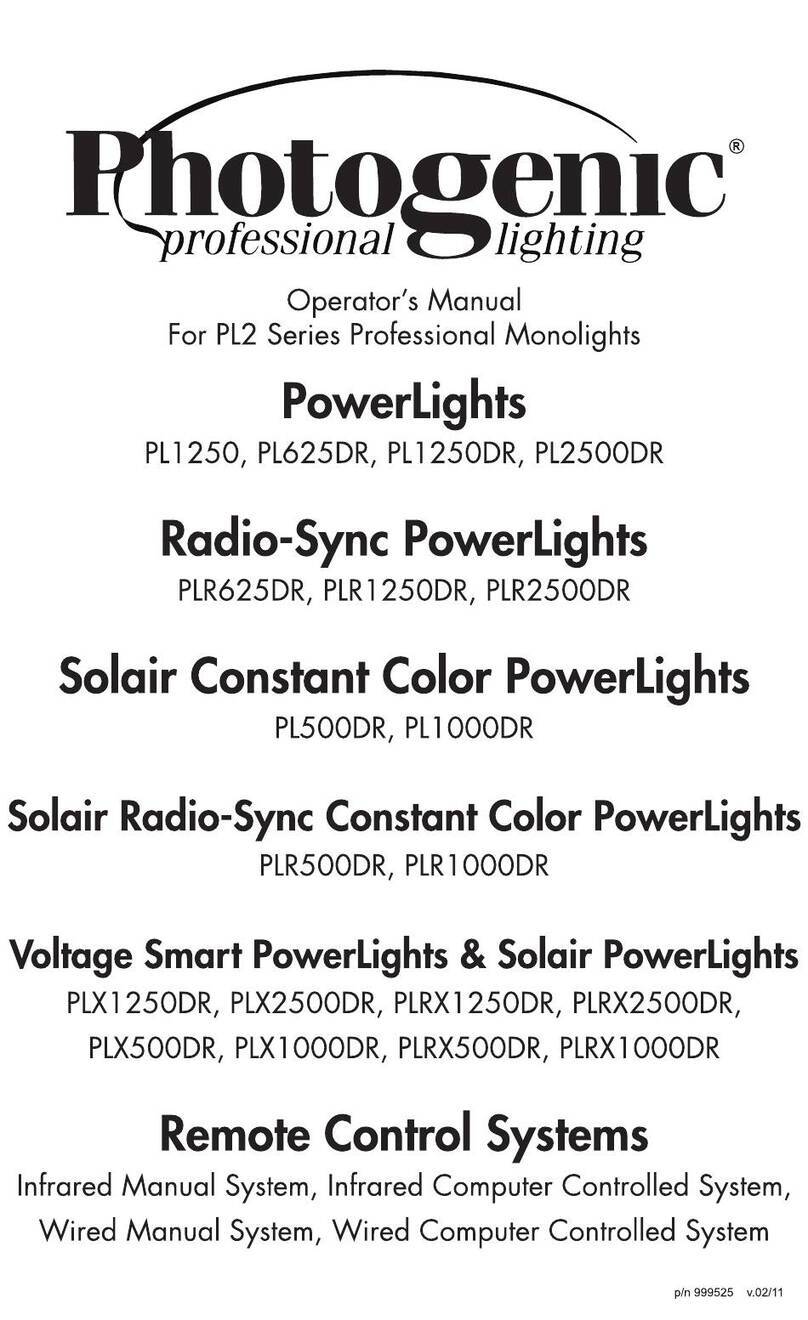7
Synchronization and Triggering:
Triggering is accomplished by using a built-in PocketWizard!radio receiver, built-in
photoslave or a trigger cable from the power supply to the camera shutter contacts of ”X”
or “zero” delay. Other units in the system are then triggered by photoslave operation.
[All radio-sync PLR units can be triggered with the PocketWizard!PLUS transmitter.]
It is best to connect the fill light directly to the camera since it will be positioned furthest
back in the studio and will usually provide sufficient illumination to trigger the other
units. It is suggested that all walls and ceiling be painted either in white or light neutral
colors for most reliable photoslave operation.
After the trigger cord is properly connected, check the synchronization with a film
camera. Adjust the lighting unit to same height as the camera lens and face the lights into
the lens. The lens aperture should be open to its fullest extent and set on “X” or “zero”
delay. Remove the camera back. It is best to perform this test with the modeling lamps
turned off.
While looking at the lens through the back of a film camera, operate the shutter. A few
sheets of white paper in front of the lens will cut down the brilliance of the flash and aid
in making the observation. The flash of the light should then appear as a circle the same
size as the aperture. If the circle is flattened on the sides, or if no light appears through
the lens, the shutter is not synchronized. If the shutter appears not to be synchronized, a
reputable camera repair shop should check the shutter contacts.
The sync polarity is Positive on center pin of cable connectors (Photogenic part PLTC,
and defined in ISO 518.)
Sync voltage is 12 vdc (Spec. = less than 24 vdc per ISO 10330:1992E, and greater than
9 vdc for Wein photo slave at 10 microampere drain.) Internal 240 ohm discharge limit,
with 68 k ohms continuous limit.
Sync signal = negative pulse, 10 microseconds or longer, from sync voltage to
1.6 vdc or less (per ISO 518.)
PocketWizard!use: The PowerLight built-in receiver is actually 16 channel useable.
The PLUS transmitter is 4 channel. The PowerLight built-in sync radio receiver will
hunt for a signal for 30 seconds after power is applied. If a minimum of four consecutive
triggers are seen during that time period, the receiver will assume that channel. If no
signal is seen, the receiver will operate on whatever channel it was set to before power
was removed. So, turn on the Plus Transmitter and set the channel to 1, 2, 3 or 4. Make
sure the local/both/remote switch is set to either both or remote. Hold the Test button (on
Plus Transmitter) down and turn the PowerLight ON. Continue to hold the transmitter
Test button down for 6 seconds. This should be sufficient time to teach the PowerLight
receiver. When you press the Plus Transmitter Test button subsequently, the PowerLight
will flash. Check transmitter instructions for proper connection to camera and other
details. To prevent the PowerLight photoslave from triggering the flash, you must
insert a SYNC plug (or _” diameter dowel rod) into the _” sync jack.




























